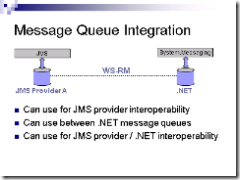- What does it take to be an architect? Skyscrapr.net attempts to answer this question by asking a bunch of architects.
- I have started teaching my children about astronomy. I found an open source product called Stellarium that is excellent for learning about the celestial objects visible in your area.
- A Methodology for SOA adoption? I read an interesting blog on this subject from a couple of weeks ago. It’s not a long article, but the author makes some interesting points including an outline for SOA adoption.
- I finally picked up Gears of War on Friday. It really isn’t a game I can see playing much, although I can see why it’s popular. I guess the best and the worst part of the game is having to utilize cover so you don’t die right away.
- Windows Live Writer is a great tool! I use it to author the blogs for my website, and this week I have been using it on these Morning Doughnuts posts. My favorite feature is that you can preview your post and see exactly how it will appear on your website. This has been particularly useful since Devhawk and my site look quite different.
Morning Doughnuts 3
Reliably Beating a Dead Horse
(Harry is on a secret mission in uncharted space this week, so instead of the daily Morning Coffee post, you get a series of autoposted essays. This post builds on Harry’s recent epiphany about WCF and long running services)
Way, way, way back in March of 2003, IBM and Microsoft published an “overview and roadmap” white paper entitled “Reliable Message Delivery in a Web Services World“. It contained the following paragraph under the section “Exchanging Messages Reliably”:
WS-ReliableMessaging is not bound to underlying transport protocols or sessions. This means that the lifetime of a WS-ReliableMessaging conversation can span long periods of time (days, weeks) even when one or both systems are rebooted. This allows conversations to be suspended mid-stream (for example, to allow system maintenance) and then resumed without needing to retransmit the entire conversation. [emphasis added]
Now I know how I got confused about WCF and long running services in the first place. Support for long running services was part of the original web services vision!
About three years after that white paper was published, Shy Cohen wrote a post entitled Reliable Messaging Demystified on his blog. Shy was at one time the feature owner of WS-RM in WCF (according to his post) and wrote the following:
Reliable sessions [in WCF] are implemented using the WS-ReliableMessaging protocol. This protocol is yet another misnamed WS-* protocol, as it actually only deals with the reliability of the transfer and says nothing about durability, delivery acknowledgments, TTL for a message, long running sessions where a particular message is lost forever, etc.
At some point in the three years between March 2003 and February 2006, WS-RM went from being the enabler of long running services to “yet another misnamed WS-* protocol”. And with it, WCF lost (never had?) the ability to support long running services (as I’ve written previously).
Now all and all, this isn’t a big deal. I agree with Shy that WS-RM is under specified as mechanism for durable messaging (Shy calls this “queued messaging”). Attempting to build durable messaging on top of WS-RM sounds like it would have been both difficult and unlike to broadly interoperate. So implementing WS-RM for TCP style reliability and leveraging MSMQ as a transport for people that need durable messaging sounds like a pretty good compromise, especially for a v1 product. Of course, it is not exactly unheard of for a project’s end result not to completely live up to the original vision. But I have a specific requirements in this case, so I wanted to know more.
By calling it “misnamed”, it sounds like WS-RM was never really intended to be used for durable messaging. However, the July 2003 Reliable Messaging Feedback Workshop indicates that it was. In particular, Rodney Limprecht’s “Reliable Messaging Scenarios” deck describes WS-RM as supporting scenarios requiring “either volatile or durable endpoint state”. His list of scenarios included both an “Intermittent Connectivity” scenario where “messages pending transfer are staged to disk and exchanged when connected” as well as a “Message Queue Integration” scenario that used WS-RM to interop between JMS and MSMQ. Seems safe to say that WS-RM was originally intended to support durable messaging. So what happened? How did it become “misnamed”?
Rodney’s deck describes WS-RM as having the “flexibility to meet scenario requirements”. But flexibility comes at a cost. For example, the flexibility of WCF’s configuration comes at the cost of significant complexity. In the case of WS-RM, it appears that by trying to make it flexible enough to support both volatile and durable reliability, the authors might have made it too flexible. WS-RM implementers have broad latitude in building the capabilities Shy mentions (durability, acknowledgements, TTL, etc) as well as describing said capabilities in policy. By providing that latitude, we lost the ability to broadly interop durable messaging, which I would suspect is why it ended up out of scope for WCF v1.
As I said before, lack of support for WS-RM based durable messaging isn’t that big a deal. As long as you understand WCF’s sweet spot - the current version’s sweet spot anyway – and don’t try and make it be something it’s not, you should be fine. Furthermore, Shy mentions the need for an “interoperable Queued Messaging specification” and wrote that it’s something he “expect[s] that we will get to it in the near future”. Here’s hoping that spec is less flexible than WS-ReliableMessaging.
